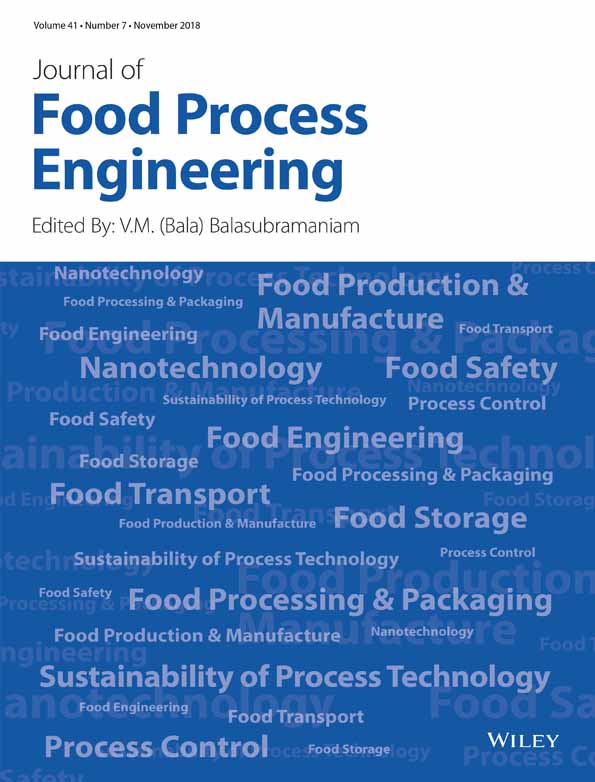Sorption isotherms and isosteric heat estimation of purple cactus pear (Opuntia stricta) juice embedded in gelatin–maltodextrin matrix
Funding information: European Commission—Education, Audiovisual and Culture Executive Agency (EACEA)
Abstract
Moisture sorption isotherms of microencapsulated juice from purple cactus pear were determined at different temperatures (15, 20, and 30 °C) in water activity (aw) range from 0.112 to 0.976. The experimental data were correlated to GAB, BET, Caurie, Smith, Henderson, Bradley, Kuhn, and Oswin models. The obtained isotherms present a sigmoid shape Type IV. The models of Smith, Kuhn, and Oswin were found as the most suitable (EMR < 10%). The isosteric heat (Qst) decreased with the increase in moisture content obtaining the maximum and minimum values of 14.84 and 5.60 kJ/mol, respectively, for moistures between 10 and 70%.
Practical applications
Today, the food industry is looking for new storage procedures for the preservation of bioactive compounds contained in fruits. Until now, many native Mexican fruits have not been processed in agro-food industry, for example, purple cactus pear (Opuntia stricta) fruit, which is one of the natural products not widely processed. There is strong evidence that such fruit contains antioxidants, natural pigments, and phenolic compounds. The conservation of the bioactive compounds can be carried out by embedding the juice into a biodegradable matrix. We first propose the encapsulation of the juice through using the gelatin–maltodextrin composite as wall material. Then, the characterization of the dried product by determining the sorption isotherms can be useful to predict the optimum storage conditions, life prediction, and packaging design of this type of products.
CONFLICT OF INTEREST
The authors declare no conflict of interest.




